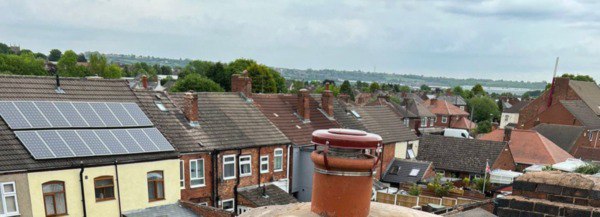Detecting and Fixing Flat Roof Leaks: A Comprehensive Guide
Introduction: Flat roofs are popular for many commercial and residential buildings due to their cost-effectiveness and versatility. However, one common issue that flat roof owners may encounter is leaks. Identifying and repairing flat roof leaks promptly is essential to prevent water damage and maintain the integrity of the roof structure. In this blog post, we’ll provide valuable insights on identifying the signs of flat roof leaks and tackling them effectively to ensure your property remains protected.
Signs of Flat Roof Leaks:
- Before you can fix a flat roof leak, you need to identify its location. Keep an eye out for the following signs that may indicate a leak:
- Water stains on the ceiling or walls
- Damp or musty odours indoors
- Ponding water on the roof surface
- Blisters or bubbles in the roofing material
- Cracks or gaps in the roof membrane
- Mold or mildew growth on interior surfaces
Conduct a Visual Inspection:
- Start by inspecting the flat roof for any visible signs of damage or deterioration. Look for cracks, tears, or punctures in the roofing membrane, gaps around flashing vents, and other penetrations. Pay close attention to areas where water may accumulate, such as low spots or around drains.
Perform a Water Test:
- If the source of the leak is not immediately apparent, conduct a water test to pinpoint its location. Using a garden hose, gently spray water onto different roof sections while someone else checks for signs of leakage inside the building. Move systematically across the roof until you identify the area where water penetrates.
Repairing Flat Roof Leaks:
- Once you’ve located the source of the leak, it’s time to initiate repairs. Depending on the extent of the damage, you may need to employ one or more of the following repair methods:
- Patching: Small punctures or tears in the roofing membrane can often be patched using specialised roofing sealants or adhesives.
- Seam Repair: If seams in the roofing membrane are compromised, they may need to be resealed or reinforced with additional adhesive.
- Flashing Replacement: Damaged or deteriorated flashing around vents, skylights, or chimneys should be replaced to prevent water infiltration.
- Roof Coating: Applying a reflective roof coating can help seal minor cracks and prolong the lifespan of the roof membrane.
Regular Maintenance:
- Prevention is key to avoiding flat roof leaks in the future. Implement a regular maintenance schedule that includes inspections, cleaning, and proactive repairs. Clear debris from the roof surface, ensure proper drainage and address potential issues before they escalate into larger problems.
Conclusion: Identifying and repairing flat roof leaks requires careful observation, thorough inspection, and prompt action. By familiarising yourself with the signs of leaks, conducting regular maintenance, and addressing issues proactively, you can protect your property from water damage and prolong the life of your flat roof.
Call us on: 01226 445 195
Click here to find out more about DHT Roofing Cudworth
Click here to complete our contact form and see how we can help with your roofing needs.

